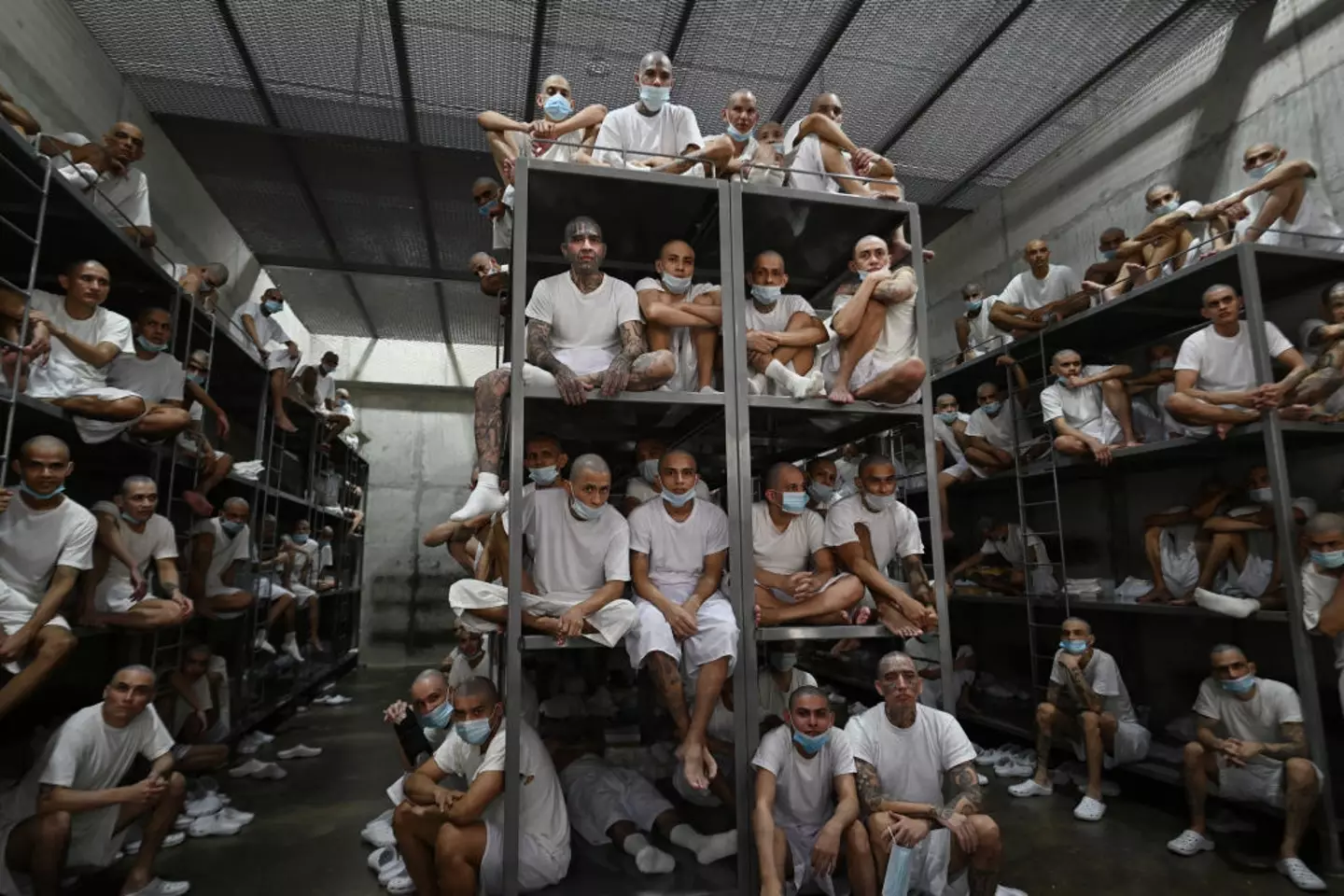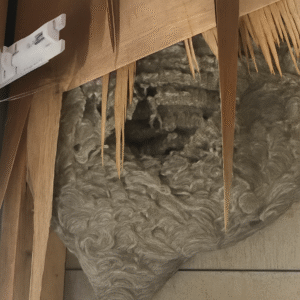Inside El Salvador’s Notorious Maximum Security Prison and Alabama’s Infamous Correctional Facility: A Tale of Two Extremes
In recent years, two prison systems have garnered significant media attention for their starkly contrasting conditions and management practices. In El Salvador, a facility that some have labeled “the world’s worst prison” has become a centerpiece of international controversy, particularly after statements suggested that it could even be used to detain U.S. citizens. In the United States, the William C. Holman Correctional Facility in Atmore, Alabama—nicknamed “Slaughterhouse” and “House of Pain”—remains a grim reminder of the challenges that come with overcrowding, understaffing, and deteriorating infrastructure. This report provides an in-depth look at both institutions, examining the policies, conditions, and controversies that define them.
El Salvador’s Maximum Security Prison: Centro de Confinamiento del Terrorismo (CECOT)
Background and Purpose
Opened in 2023 under President Nayib Bukele’s administration, the Centro de Confinamiento del Terrorismo (CECOT) was established as a critical component of El Salvador’s strategy to combat rampant gang violence. Located in Tecoluca, the maximum security prison was designed with a capacity of 40,000 inmates, making it one of the largest and most secure facilities in the world. It is intended to house the country’s most dangerous criminals, including notorious gang members and high-profile murderers.

The facility’s construction was part of a broader crackdown on organized crime in El Salvador, where violent gangs have long been a significant challenge to public safety. With its imposing security measures—including 19 surrounding towers, two concrete walls, and two electrified fences—the prison is engineered to maintain constant surveillance over inmates, with a dedicated security team monitoring activities 24 hours a day.
Conditions Inside the Facility
Despite its state-of-the-art security features, numerous reports have painted a grim picture of life inside CECOT. The United Nations Subcommittee for the Prevention of Torture once described the facility as a “concrete and steel pit,” highlighting the inhumane conditions under which prisoners are held. Inmates reportedly live in conditions that many human rights observers have characterized as brutal and degrading. Overcrowding, limited ventilation, and the absence of adequate sanitation measures have led to widespread concerns about the treatment of detainees.

BBC News Mundo correspondent Leire Venta, who visited the prison last year, provided a firsthand account of the conditions inside. “It is the middle of the night, but here the artificial lights never go off,” Venta recalled. She described how the heat inside the cells could reach up to 35°C during the day, with only sporadic air filtering through the lattice ceilings offering temporary relief. Inmates sleep on four-storey metal bunks without mattresses or bedding, and meals—comprising rice, beans, hard-boiled eggs, or pasta—are consumed with little more than bare hands.
In her conversation with the facility’s director, Venta was warned: “Don’t look them in the eyes. Any utensil can be fashioned into a deadly weapon.” This stark warning underscores the dangerous environment within CECOT, where violence and a constant state of alert pervade daily life.
Political Implications and International Controversy
CECOT has recently taken on an additional layer of geopolitical significance. U.S. Secretary of State Marco Rubio announced on February 3 that President Bukele had agreed to what he termed “the most unprecedented, extraordinary, migratory agreement anywhere in the world.” According to Rubio, Bukele has stated that he is willing to accept deportees from the United States, regardless of their nationality, and even dangerous criminals, including U.S. citizens or legal residents currently serving time in U.S. prisons.

This proposal has ignited fierce debate. On one side, supporters see Bukele’s willingness to take in deportees as a pragmatic solution to overcrowding in U.S. prisons and a potential means of bolstering El Salvador’s own security efforts. On the other, critics argue that sending U.S. citizens to a facility described as “inhumane” is unacceptable and represents a dangerous shift in immigration and criminal justice policy.
Bukele’s administration has clarified that only convicted criminals would be eligible for transfer under this agreement, with the U.S. expected to pay a fee in exchange for outsourcing part of its prison system. This controversial offer has added to the already heated debate about human rights and the treatment of prisoners in El Salvador, as many fear that such policies could lead to further abuses in an already troubled system.
William C. Holman Correctional Facility in Atmore, Alabama
A Reputation for Brutality
Half a world away, the William C. Holman Correctional Facility in Atmore, Alabama, has long been known for its harsh conditions and violent environment. Often referred to by ominous nicknames such as “Slaughterhouse,” “Slaughter Pen of the South,” and “House of Pain,” Holman has earned its fearsome reputation over decades of overcrowding, understaffing, and persistent violence.
Originally built in 1969 with a design capacity of 581 inmates, Holman Correctional Facility now holds far more prisoners than it was intended to accommodate. This chronic overcrowding has contributed to an environment where violence, gang rivalries, and riots have become almost routine. The facility’s infrastructure, already strained by decades of use, has struggled to adapt to the rapidly increasing inmate population.
Overcrowding, Understaffing, and Deterioration
One of the most critical issues at Holman is its severe understaffing. In 2018, reports indicated that the number of correctional officers at Holman was less than one-fifth of what was deemed necessary for routine operations. With an annual staff turnover reaching up to 60 percent, the facility has consistently operated at a dangerously low staffing level. In some instances, the number of officers was reported to be as low as 72 for a facility that ideally required 195.
The overcrowding has led to cramped living conditions. Inmates are forced to share dormitory-style cells, and the lack of sufficient beds or proper cells exacerbates the already dire situation. The prison’s environment is further compromised by inadequate cooling systems. Located in the Gulf Coast region where temperatures regularly soar, Holman does not have an air conditioning system. Instead, it relies on industrial fans that many inmates and staff alike claim are woefully insufficient in combating the oppressive heat. In some cases, the heat in communal areas is so intense that it has been likened to being “boiled alive.”
Violence is an ever-present concern at Holman. In the past, violent incidents have included stabbings, large-scale riots, and even hostage situations. In 1974, a staff member was fatally stabbed by an inmate, and eleven years later, a major riot resulted in 22 hostages being taken, including wardens and other employees. More recent episodes of violence have continued to underscore the systemic issues plaguing the facility.
Death Row and Execution Controversies
Holman also houses a significant number of inmates on death row, with 170 cells dedicated to those facing capital punishment. The prison is the state’s designated execution site, where the controversial nitrogen hypoxia method has been employed. This method, which came under intense scrutiny following the execution of 58-year-old Kenneth Smith on January 25, left observers shocked by the visible suffering of the condemned inmate. Reports described Smith writhing and convulsing violently on the gurney, a scene that further cemented Holman’s reputation as a place where inhumane conditions are the norm.
Documentary filmmaker Hilary Heath, who produced a project titled LOCKUP Inside: Holman Correctional Facility for MSNBC in 2006, recounted her experiences within the prison. Heath spoke with several inmates, including one who had committed a violent act over a dispute about a tattoo, as well as staff members who expressed concerns about the facility’s pervasive atmosphere of fear and violence. According to Heath, the conditions inside Holman were such that even routine rule violations—such as those related to indecent exposure—had become significant problems, further illustrating the breakdown of order within the institution.
Pastor Kenneth Glasgow, a long-time worker with the prison population, vividly described the environment at Holman, stating, “It’s a bloodbath. There are killings every day at Holman. As soon as you arrive, they tell you, ‘better get yourself a knife because everybody else has one’.” Former employee Lieutenant Curt Stidham echoed these sentiments, remarking that “no one is winning at Holman. There is only survival.”
Comparing Two Systems: Global Implications and Calls for Reform
Both the maximum security facility in El Salvador and the Holman Correctional Facility in Alabama present stark examples of how prison environments can deteriorate under systemic pressures. In El Salvador, CECOT was constructed with the dual aims of combating gang violence and serving as a deterrent through stringent security measures. However, international observers have condemned the prison’s conditions as inhumane, and its potential use as a detention center for U.S. citizens has sparked a heated debate over human rights and sovereign policy.
In contrast, Holman’s longstanding issues with overcrowding, understaffing, and violent conditions reveal a chronic failure to adapt to evolving challenges within the American prison system. Despite decades of operation, Holman remains emblematic of a broader crisis in U.S. corrections, where budgetary constraints, inadequate staffing, and outdated facilities have combined to create an environment that is both unsafe and dehumanizing for inmates and staff alike.
Both cases have prompted calls for reform. In El Salvador, international human rights organizations and local advocacy groups are urging the Bukele administration to address the inhumane conditions within CECOT and reconsider its role in handling deportees and dangerous criminals from abroad. Similarly, in the United States, activists and policymakers are increasingly scrutinizing facilities like Holman, calling for investments in infrastructure, improved staffing ratios, and comprehensive reforms that prioritize both safety and the dignity of incarcerated individuals.
The controversies surrounding these facilities underscore a fundamental challenge: how to balance the need for stringent security measures with the imperative to treat prisoners humanely. In both contexts, the failure to achieve this balance not only leads to public outcry and international criticism but also raises serious ethical and legal questions about the role of incarceration in modern society.
Conclusion
The examination of El Salvador’s CECOT and Alabama’s Holman Correctional Facility reveals a stark dichotomy in how different governments manage high-security prisons. While one facility was built in an effort to stem gang violence with an iron grip, its inhumane conditions have drawn global condemnation and raised concerns about potential human rights abuses. Conversely, Holman Correctional Facility, long plagued by overcrowding, understaffing, and violence, stands as a testament to the persistent challenges within the U.S. prison system.
Both institutions serve as urgent reminders that significant reforms are needed to ensure that prisons serve not only as centers of security but also as facilities that respect human dignity. As debates continue and calls for reform intensify on both sides of the globe, the stories emerging from these institutions may well catalyze a broader reexamination of prison policies and practices worldwide.
Stay tuned for further updates as investigative reports and reform efforts shed more light on these critical issues, and as policymakers grapple with the complex task of rebalancing security with humane treatment in modern correctional facilities.





